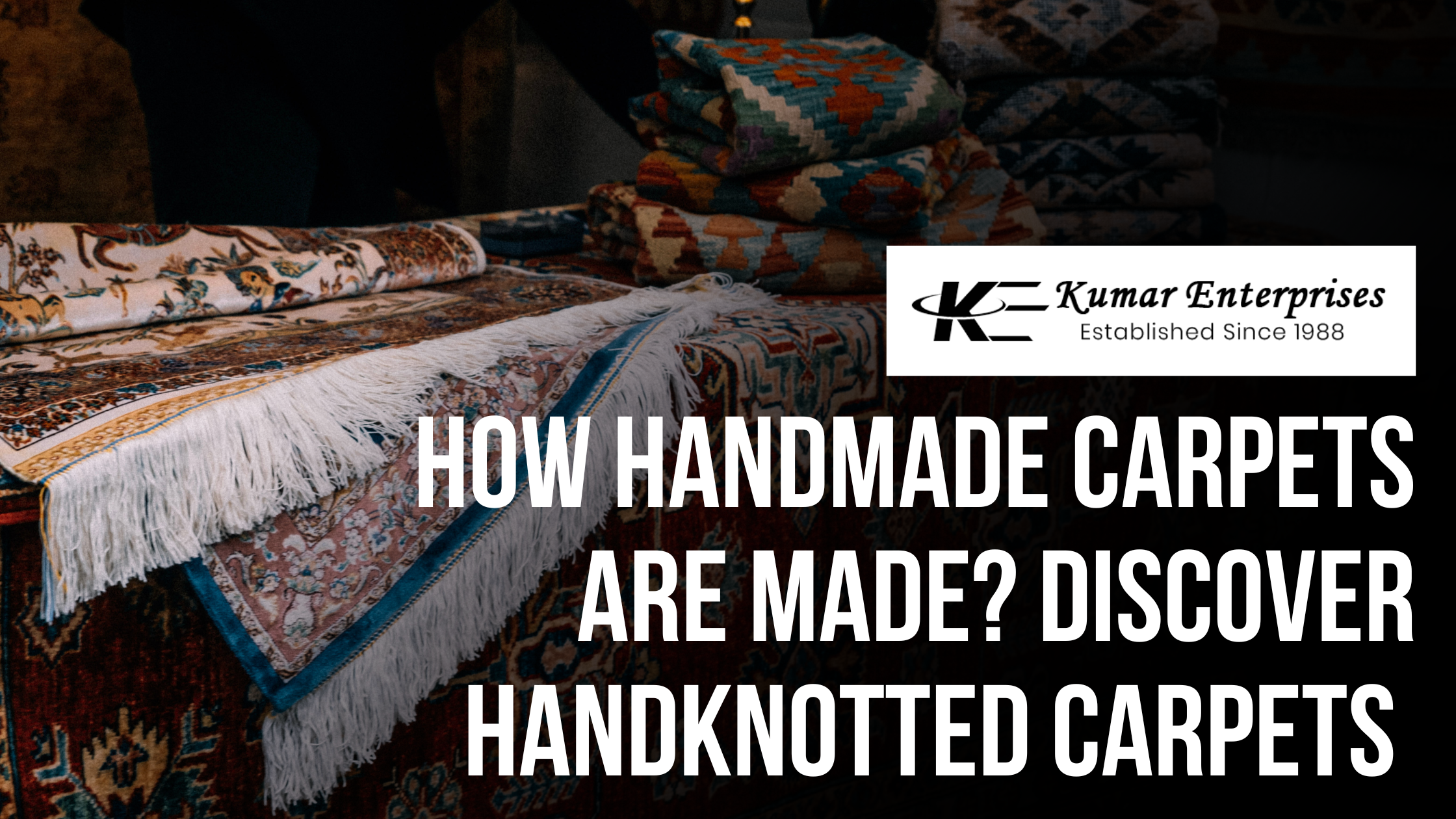Handknotted carpets are definitely not the mere decoration of a home or an office room; they are cultural artifacts that represent the heritage and artistic expression of a region. These are primarily valued for aesthetics, durability, and craftsmanship. Through this blog post, let’s develop an understanding of handmade carpets with a special focus on traditional handknotting techniques.
Best Handmade Rugs
A History Humans have used handmade carpets for more than thousands of years. The art emanated from the ancient cultures of the Middle East, Central Asia, and the Subcontinent. The different styles and techniques of carpeting of the regions express the cultural origin of each.
Materials Used in Handmade Carpets
T Wool: The most commonly used fiber, famous for its strength and softness.
Silk: known for its finely detailed texture and luxurious luster, is commonly utilized in crafting top-line carpets.
Cotton: Most often used for the carpet’s base yarn as it is strong. Natural dyes, derived from plants, minerals, and occasionally insects, represent traditional and eco-friendly alternatives to synthetic dyes.
At the start of the modern age, developers created artificial dyes, which exhibited a wider range of colors and greater consistency. Prior to weaving, weavers prepare a design, typically a detailed drawing called a ‘cartoon,’ to guide the knotting process. The designs can range from traditional ones using floral and geometric patterns to more modern ones by making use of customized themes.
The Art of Knotting – Making Handknotted Carpets
The Making of Handknotted Carpets Types of Knots Turkish (Ghiordes) Knot Symmetrical, firm, and compact.
Senneh Persian Knot: An asymmetrical knot that can allow a higher level of detail, thus permitting very complex designs. Elevating the Loom The first set-up tool for artisans is a loom—a vertical frame with threads. In the loom, the tautness of the warp threads, usually of cotton make to ensure strength, is held in place.
Tying the Carpet: The artisans make individual knots to the warp threads, cutting and securing each knot by hand, to build up rows that form the pile of the carpet. This becomes a very laborious process, since one large carpet will have millions of knots.
Also read – https://kumarcarpets.com/blog/2024/04/29/handknotted-carpets-rugs-home/
Inserting the Weft: The weft, or horizontal thread between rows of knots, passes from one side to the other across the warp, locking in the knots and building the structure of the carpet.
Background: I have After completing the knotting, the carpet is cut from the loom. The other finishing is clipping the pile to level it and washing the carpet to give a good texture and color.
There will be differences in color usage, Description: The art Known for intricate designs and vibrant colors. Carpets from Turkey Symmetrical designs and a dense, strong weaving are often included. Carpets from the
They feature a distinctive knotting technique and incorporate spiritual motifs, defining their unique character.
Care of Handknotted Carpets
Regular cleaning is important to keep handknotted carpets beautiful and to ensure they last for a long time. Recommended care includes regular vacuuming, prompt treatment of spills and stains, and professional cleaning. Why Handknotted Carpets This means that when a person buys a hand-knotted carpet, one is investing in an artwork—tradition, craftsmanship, and time-defying beauty.
Also read – https://kumarcarpets.com/blog/2024/04/25/top-handmade-carpet-manufacturers/
These carpets are durable, sustainable, and very often increase in value, not just decoration but an heirloom. Handknotted Rugs in Modern Interior Design The hand-knotted carpet is highly flexible and applied in all types of room interiors. It adds value to the place by giving an addition of design schemes, whether classic or contemporary, hence establishing an elegance and warmth.
Making a hand-knotted carpet is really an amalgamation of art and very detailed labor. An individual would not just own a handmade carpets to adorn a space but also to preserve one of the world’s richest cultural heritages and partake in it. As we continue cherishing these beautiful creations, it’s paramount to understand and appreciate the efforts and history behind each knot.



